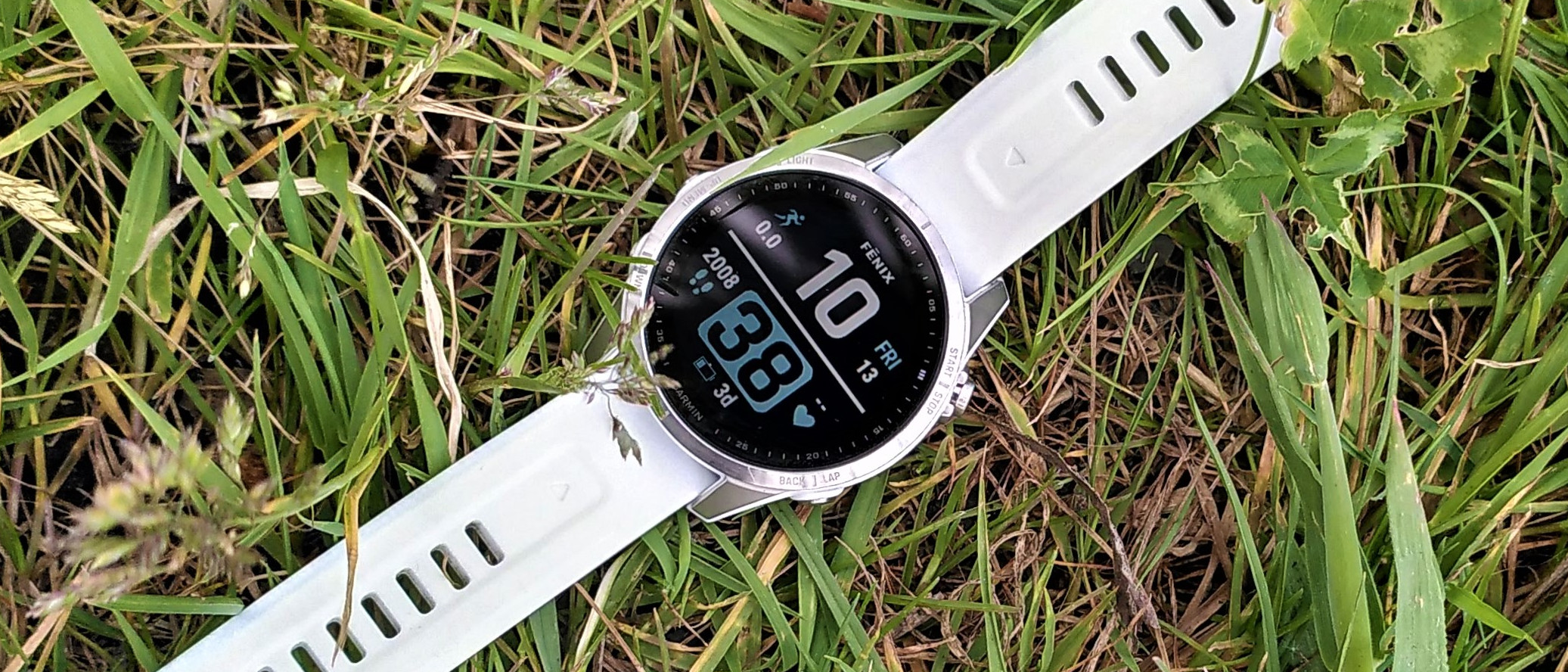Advnture Verdict
The Garmin Fenix 7 is the company's most impressive multi-sports watch to date, and has a lot to offer whether you're a runner hoping to hit a new personal record, or a hiker who wants to explore new routes and built fitness. Battery life is greatly improved from that of the Fenix 6 (particularly if you opt for one of the solar models), and the new training tools are thoughtfully designed.
Pros
- +
Extremely accurate GPS
- +
Tools for competitive runners
- +
Extra tough design
- +
Choice of case sizes
Cons
- -
Colors sometimes look muddy
- -
More expensive than Fenix 6
You can trust Advnture
Garmin Fenix 7: first impressions
At first glance, the Garmin Fenix 7 has a similar design to its predecessor, with the same five-button interface, but there's one important difference: a touchscreen. The physical buttons are still preferable for operating the watch with wet hands or while wearing gloves, but the ability to pan across maps makes a world of difference.
• RRP: From $699.99 / £599.99
• Case size: 42mm / 47mm / 52mm
• Weight: 63g / 79g
• Display type: Memory-in-pixel
• Water rating: 10ATM
• Best use: Trail running, road running, hiking, swimming, cycling, water sports, gym work
As with the Fenix 6, there are three case sizes to choose from (42mm, 47mm, and 51mm), though it's worth bearing in mind that the smaller the watch, the smaller the battery and therefore the shorter the battery life.
You can also take your pick from standard, solar, and solar sapphire versions. The solar models are more expensive, but with a regular dose of sunlight (something easily achieved if you're out running or hiking), you'll need to recharge your watch far less frequently. The sapphire solar model has a sapphire lens that's more resistant to scratching than the chemically-toughened glass used by the other versions.
The watch has the same color memory-in-pixel display as Garmin's other Fenix and Forerunner watches. This is easy to read in most lighting conditions, but the blue backlight means red and yellow colors can look muddy, and maps aren't quite as clear as we might like.
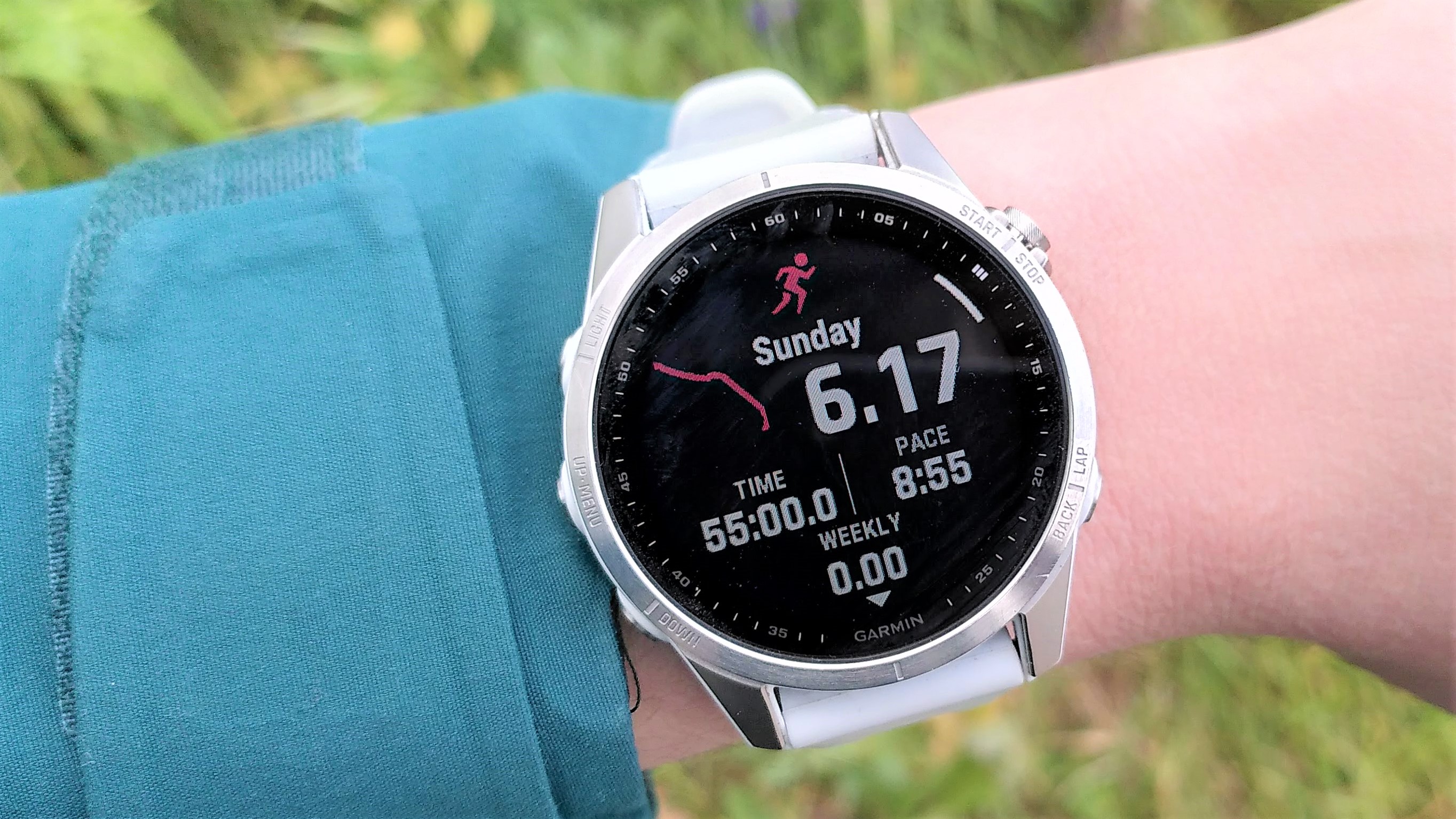
If that's a dealbreaker for you, take a look at the Garmin Epix, which is essentially the same watch with a bright OLED screen. The downsides of the Epix are reduced battery life and a higher price tag, so you'll need to decide where your priorities lie.
Garmin Fenix 7: in the field
A watch like the Garmin Fenix 7 might seem overwhelming at first, but its interface is extremely well designed, making it a breeze to navigate. Using your fingertip to swipe down on the watch face will reveal all your latest stats, including your most recent activity, current heart rate, Body Battery (how much energy you have for the rest of your day, a brief weather forecast, and more. You can pick and rearrange the data that appears here to suit your needs. Don't want to see your diary, or want to see your calorie count first? No problem.
There are dedicated tracking modes for a huge range of activities, but the Fenix 7 really comes into its own for running (either road or trail), cycling, and swimming. I particularly appreciated the watch's workout suggestions, which help you balance your training even if you're not sticking to a specific plan, and its real-time stamina meter that shows how much energy you have during a run. Not sure whether to push harder or ease off? Just glance at your wrist to find out.
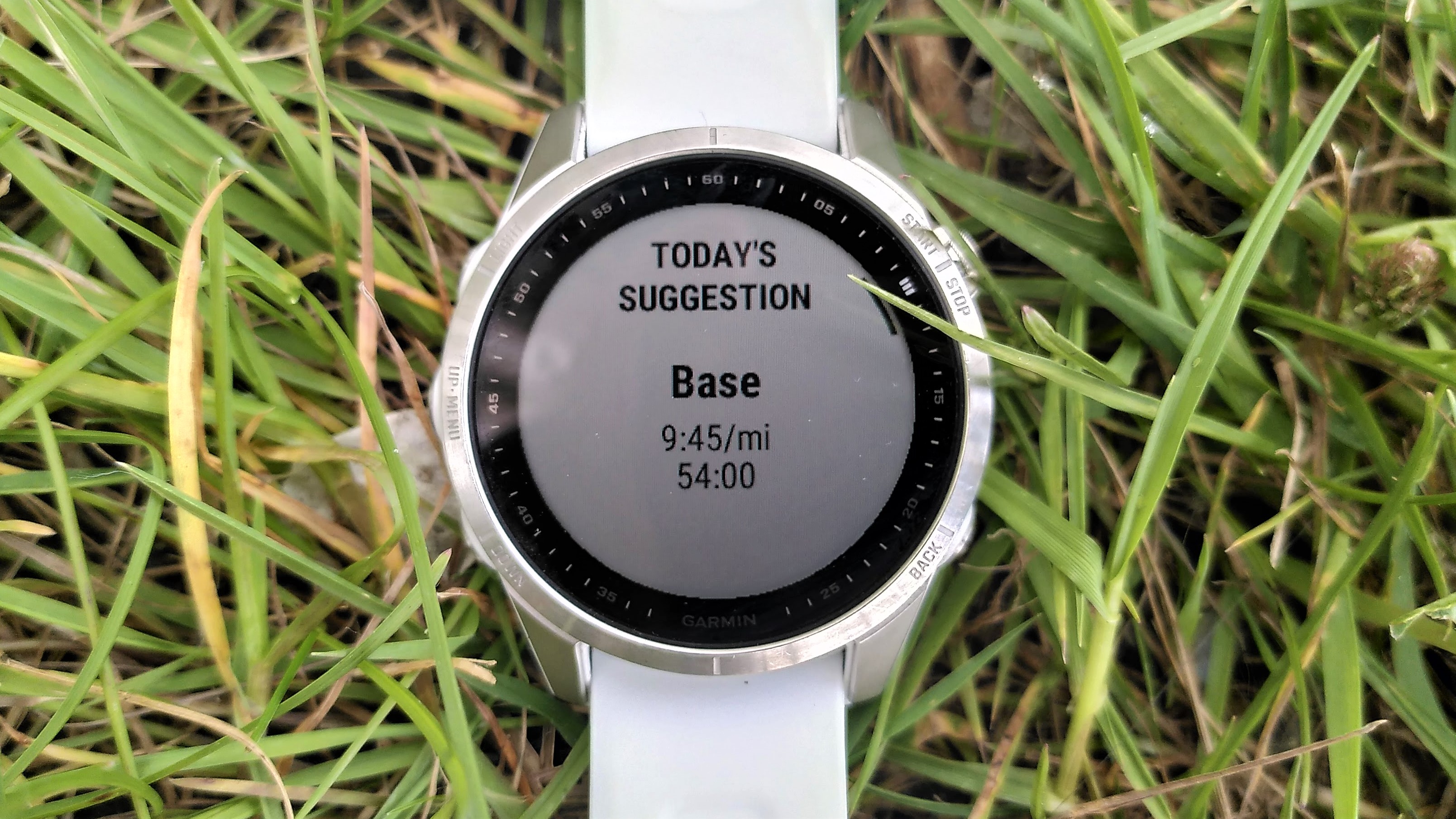
Garmin makes some of the best GPS watches, and the Fenix 7 doesn't disappoint. I put it to the test on a pre-measured course, and it was accurate to within just a few meters (perfectly acceptable for a route on roads rather than a track).
If you want to explore somewhere new, you can also create your own routes using the Garmin Connect app, then upload them to the watch. This takes a little time, but the on-screen navigation tools are excellent, and I particularly appreciated Garmin's turn-by-turn directions. The only downside is that the maps aren't as bright and clear as they are on the Garmin Epix due to the different screen technology.
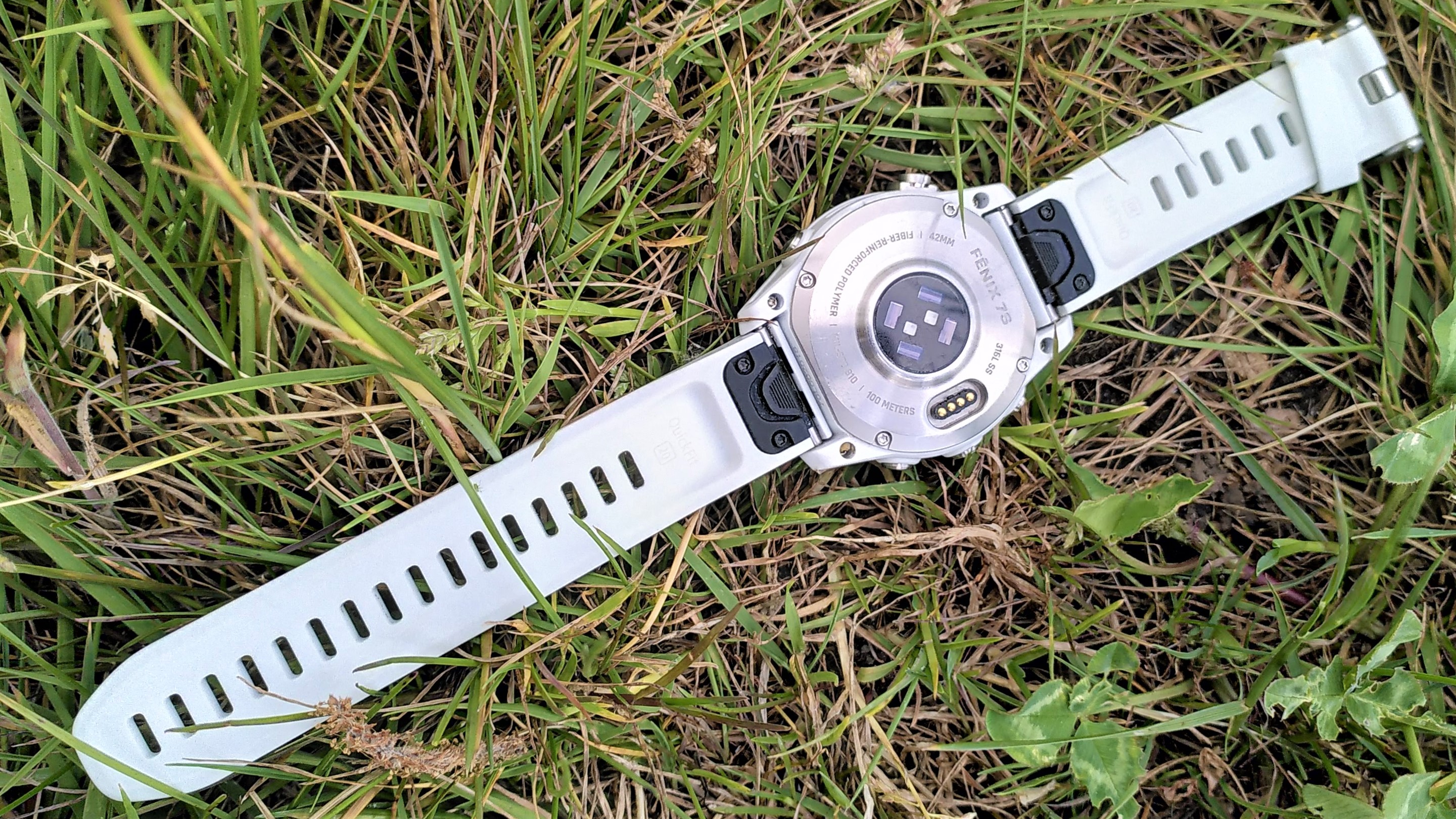
The Fenix 7 also fares well when it comes to everyday health tracking. In my tests its heart rate monitor proved responsive and accurate. I pitted it against a chest strap monitor during several tough interval training sessions on an indoor spin bike, and the results were almost identical.
If you're training hard for an event, then rest is extremely important, and again the Fenix 7 shines. It accurately detected when I began sleeping and when I actually woke, unlike some sports watches that start tracking 'sleep' the moment you settle down in bed. The only downside is that, like all Garmin watches, the Fenix 7 can't handle naps. If you're committed to an afternoon siesta, a watch from Amazfit might be a better choice as they detect brief snippets of sleep and factor it into your daily health report.
Garmin Fenix 7: companion app
The Garmin Fenix 7 (like all of the company's watches and fitness trackers) works with the Garmin Connect smartphone app, which is available for both Android and iOS. Like the watch itself, this might seem intimidating at first, but is actually very straightforward once you get used to it.
Data from your watch is synced with the app automatically, and the homescreen presents you with a series of 'cards' displaying your daily activity, rest, heart rate, stress, menstrual cycle, and other metrics. Tapping on any of these will allow you to drill down for more information, and you can easily scroll back to review stats from previous days or check for trends.
I appreciate the fact that, unlike Fitbit, Garmin doesn't lock historic data and insights away behind a paid subscription. Everything is available for free.
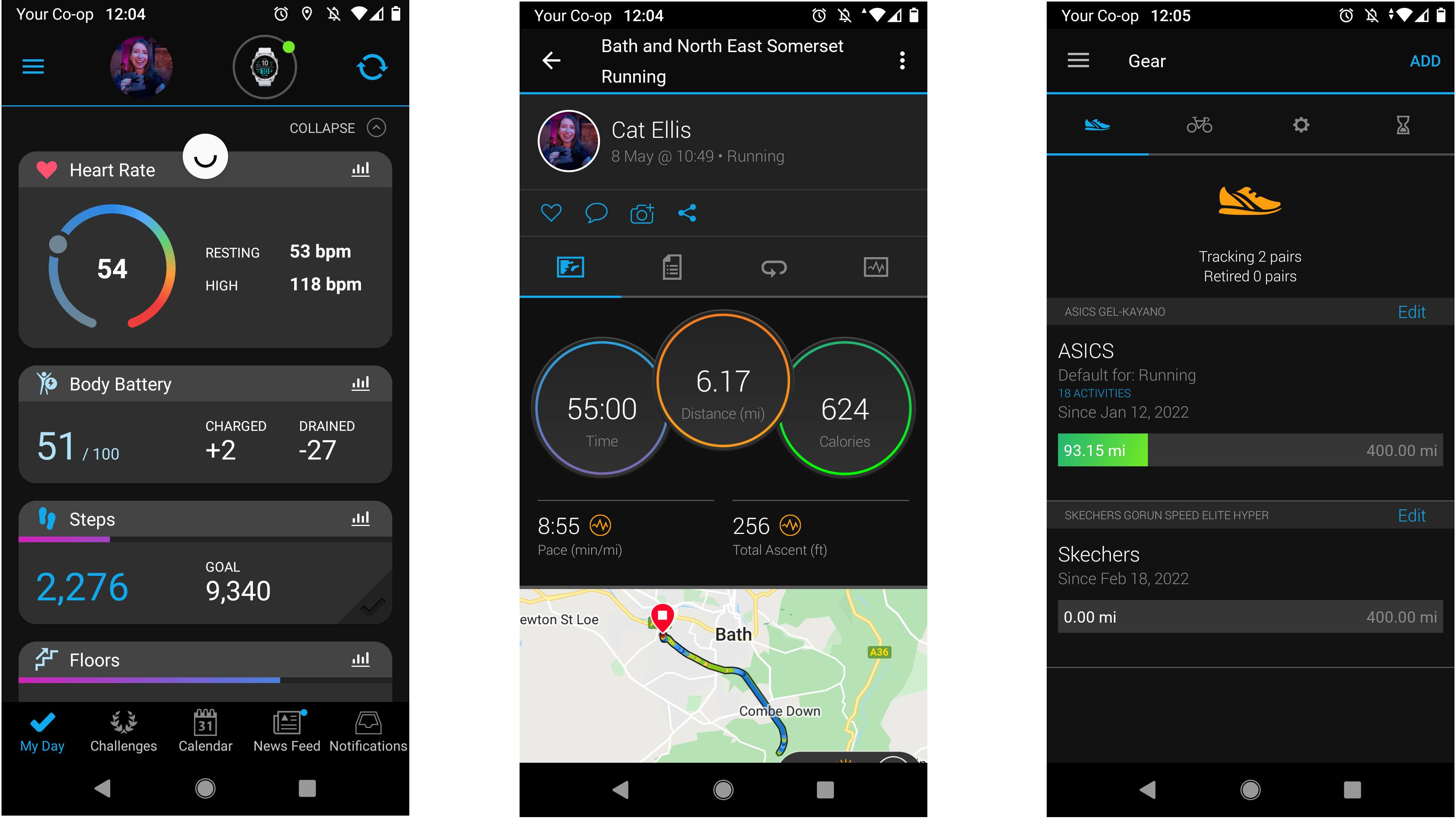
Open up the left-hand menu and you'll discover an array of other health and fitness tools, including some unusual extras. I particularly like the gear tracker, which allows you to monitor the age of any piece of equipment you own – such as trail running shoes, hiking boots, or even your waterproof jacket and trekking poles.
It's an app that's clearly designed by people who are passionate about getting active outdoors, and it's well worth the time it takes to familiarize yourself with everything it has to offer.

Cat is Homes Editor at TechRadar and former editor of Advnture. She's been a journalist for 15 years, and cut her teeth on magazines before moving online. She helps readers choose the right tech for their home, get the best deals, and do more with their new devices.
